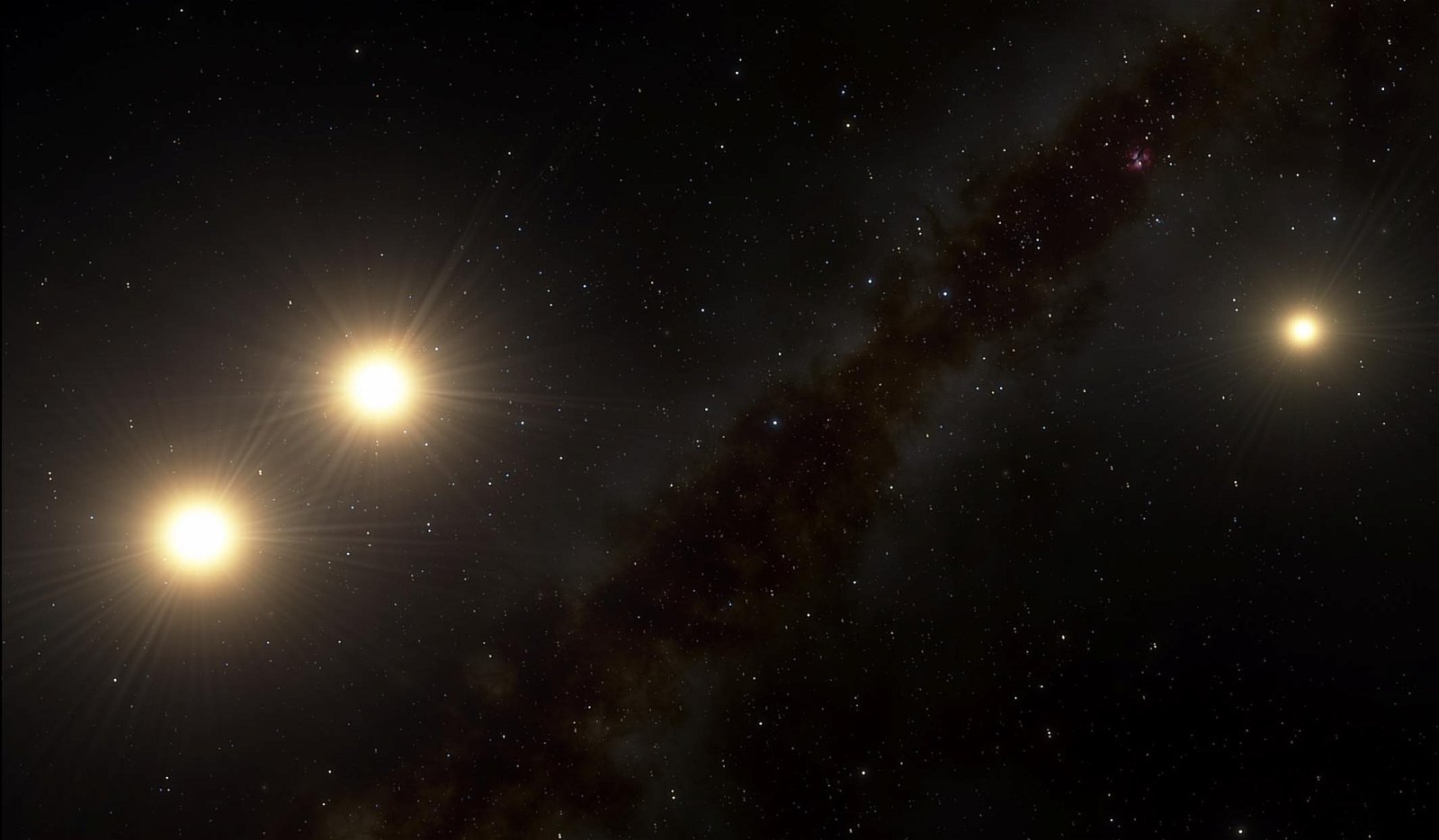There are striking analogies between the interpersonal relationships of humans and the gravitational interaction of physical bodies in space. Consider a two-body system. In both realms, the systems can have stable configurations, leading to long-lived marriages or stellar binaries. But when a third body interacts strongly with these systems, a non-hierarchical three-body system often displays chaos with one of the members ejected and the other two remaining bound. This brings up analogies with interpersonal relationships when a third body is added to a non-hierarchical two-body system.
The chaotic gravitational dynamics in a system of three stars inspired the storyline for the novel “The Three-Body Problem” by the Chinese science fiction writer Cixin Liu. The book describes a planet in the triple star system, Alpha-Centauri, whose unpredictable chaotic dynamics motivate a civilization born there to travel towards Earth, which possesses a stable orbit around the Sun. Four years ago, I recommended this novel to the creators of a new series on Netflix, which recently came to fruition.
The restricted three-body problem involves a stable orbit of two large bodies accompanied by a small third body. In this case, the satellite resembles a child living with two parents, a configuration that often, but not always, displays stability.
In 1975, the Scottish astronomer Douglas C. Heggie wrote a paper in which he simulated the evolution of pairs of stars embedded in a star cluster. Heggie compared the binding energy per unit mass of each stellar binary to the characteristic energy of the background cluster members. He found that binaries, which are more tightly bound than the background average, tend to get tighter as a result of interactions with the background stars. Conversely, binaries which are more loosely bound than the background, get wider and eventually detach. This resulted in Heggie’s law: “Hard binaries get harder, and soft binaries get softer.” This law rings a bell regarding married couples in a closed society of background people who interact intensely with them.
The above-mentioned analogies are surprising, given that gravity is attractive, whereas human interactions are both attractive and repulsive. In electromagnetism, charges of equal sign are attracted to each other, whereas charges of opposite sign repel each other. This is different from human interactions, where people with aligned views are attracted to each other, and those with opposite views repel each other.
The main difference between a collection of charged particles, a so-called plasma, and a collection of gravitating bodies is that electric interactions can be screened. An embedded charge tends to attract opposite charges around it, resulting in the so-called Debye sphere, outside of which this charge has no influence. The neutralization of embedded charges makes a plasma behave like a neutral fluid on scales much larger than the Debye scale. In contrast, gravity cannot be screened because all known gravitating masses are positive.
The long-range nature of gravity, with no screening, allows it to dominate the evolution of the Universe. All other known forces, including electromagnetism and the weak and strong interactions, are much stronger than gravity on small scales, but they do not reach the cosmic scales on which gravity is most effective.
Another difference between a plasma and a collection of gravitating bodies is that the latter is dynamically unstable. The core of a star cluster, with more binding energy per star than its envelope, tends to transport energy outwards, just like a hot object embedded in a cold environment. As energy is drained from the core, it condenses to a higher density where it becomes even “hotter”. This results in a gravothermal instability, during which the collapse process accelerates as the interaction time among the stars gets shorter as the cluster core gets denser.
In 1957, the Austrian-British astrophysicist Herman Bondi wrote a paper in which he considered the existence of negative masses in Albert Einstein’s theory of gravity. A negative mass would repel a positive mass away from it and attract another negative mass towards it. Given that, a pair of positive and negative masses of equal magnitude could accelerate together up to the speed of light. The negative mass would push away the positive mass, which in turn would pull the negative mass for the ride. The runaway pair would accelerate indefinitely without any need for fuel or a propulsion system. Energy conservation would not be violated because the sum of the two masses is zero. Does the real Universe contain runaway pairs of positive and negative masses that accelerate close to the speed of light over billions of years?
A runaway pair of equal and opposite-sign masses would not exert a net-gravitational influence at large distances because the two components sum up to a zero total mass. However, if the runaway pair passes close to a gravitational wave observatory, like LIGO-Virgo-KAGRA, it could induce a brief gravitational signal that could be detected at distances comparable to the separation between the positive and negative masses. The signal will be characterized by a pulse of gravitational attraction followed by a pulse of gravitational repulsion or the other way around.
Given that the net gravitational effect of runaway pairs is zero, they have no effect on the mass budget of the Universe or its expansion history. However, it would be intriguing to search for them. If we ever find material with a negative mass, we could use it for gravitational propulsion. Alternatively, if we ever encounter an alien spacecraft that maneuvers with no associated engine or fuel, we should check whether its creators used negative mass to propel it.
After all, we know that the expansion of the universe is accelerating due to the repulsive gravity generated by an unknown substance called “dark energy.” If we could bottle this substance in a thin enclosure, we might possess a negative mass object that could enable our future exploration of interstellar space.
Avi Loeb is the head of the Galileo Project, founding director of Harvard University’s – Black Hole Initiative, director of the Institute for Theory and Computation at the Harvard-Smithsonian Center for Astrophysics, and the former chair of the astronomy department at Harvard University (2011-2020). He is a former member of the President’s Council of Advisors on Science and Technology and a former chair of the Board on Physics and Astronomy of the National Academies. He is the bestselling author of “Extraterrestrial: The First Sign of Intelligent Life Beyond Earth” and a co-author of the textbook “Life in the Cosmos”, both published in 2021. His new book, titled “Interstellar”, was published in August 2023.

